Lorida, Florida: Origins of a Cracker Town

Many towns in Florida were started by skilled real estate developers with capitalistic dreams of striking it rich, not Lorida. Its cowboy homesteaders sought the hard country life, building their own version of Eden on the edge of the Everglades.
Speed too quickly down Highway 98 between Sebring and the Kissimmee River, and you might just miss Lorida. Not so much as a blinking light is there to give it away. Only a slim spattering of buildings — a few small stores and churches — betray its “downtown” district. The final bump-bump of a railroad crossing bids you “so long” in favor of a dozen miles of uninterrupted cattle grazing lands that follow.
The meager commercial district doesn’t do justice to the long and rich history of the community. Its not-so-distant pioneers were self-sustaining homesteaders looking to start a new life on the edge of known civilization.
There was no George Sebring in Lorida. No founding father paved its way like Avon Park’s Oliver Crosby. The hamlet had no skilled marketeer to praise its utopian paradise like Lake Placid had Melvil Dewey. No, the tiny farming community of Lorida came about very much organically.
Starting in the 1910s, the area’s first settlers began to lay down their roots along the marshy shore of Lake Istokpoga. Carrying their families and belongings in oxen-pulled wagons, they trod across miles of saturated muck land to reach their new homes along the big lake’s northeastern banks.
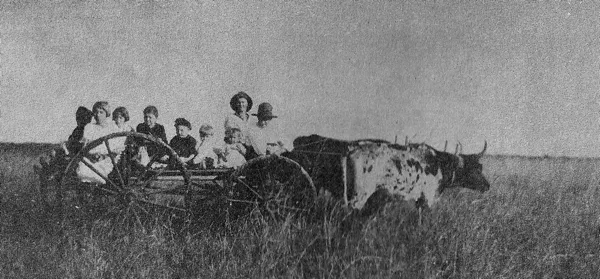
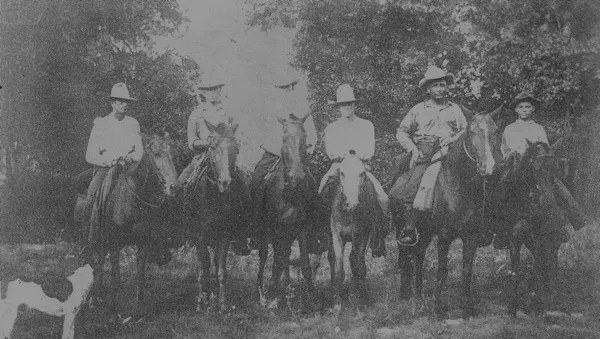
Two of those pioneers were Robert and Mary Stokes, who relocated their family from Fort Meade in 1929. Two oxen pulled their wagon to their new homestead adjoining Lake Istokpoga.
The two-day trip included an overnight stop in Sebring and a ferry over Arbuckle Creek the next day. They brought with them just a single hog and a milk cow; eventually, the hard-working cowboys built up a successful general store in town and a cattle ranch with substantial land holdings.
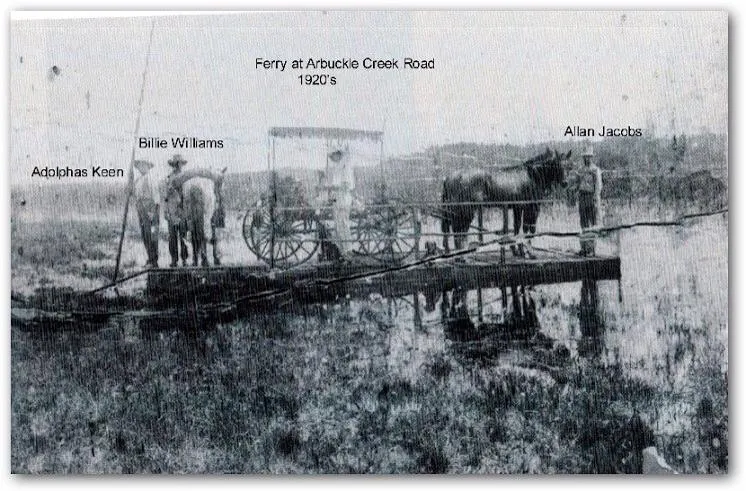
Their youngest son Edgar was born in 1939 on the old family property, just south of Highway 98 in Lorida. I was humbled when Edgar and his wife Norma (herself a lifelong resident of Highlands County) invited me over to discuss the town’s rich past.
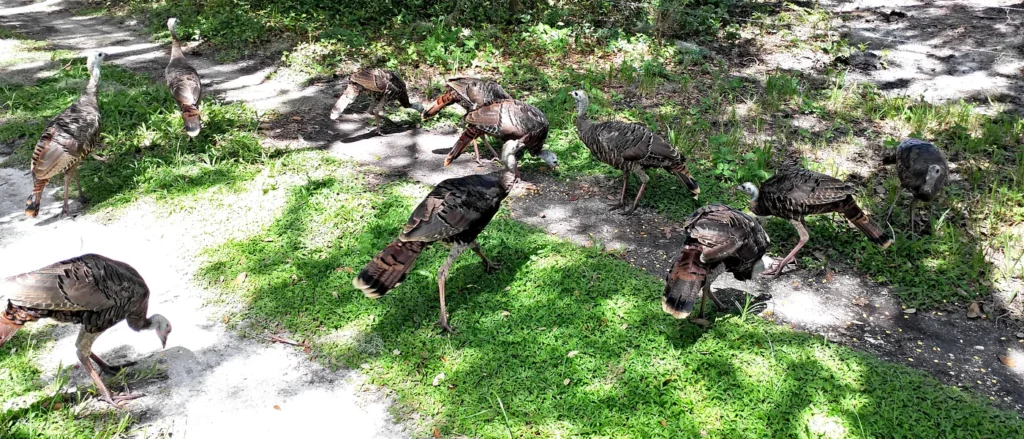
As my dad and I pulled into the Stokes Ranch, we were first greeted by a particularly friendly brood of wild turkeys. A white-haired Southern gentleman emerged from the home a second later, rattling a corn-filled container. As Edgar tossed out a few handfuls, it became apparent these fowls were teetering on the edge of being considered domesticated. The sound roused several more hens from a half acre away.
As the birds feasted, we headed inside, finding Norma smiling at us. The couple had already spread volumes of old scrapbooks, ledgers, and other historical documents across the table. A beautiful sight to this historian’s eyes!
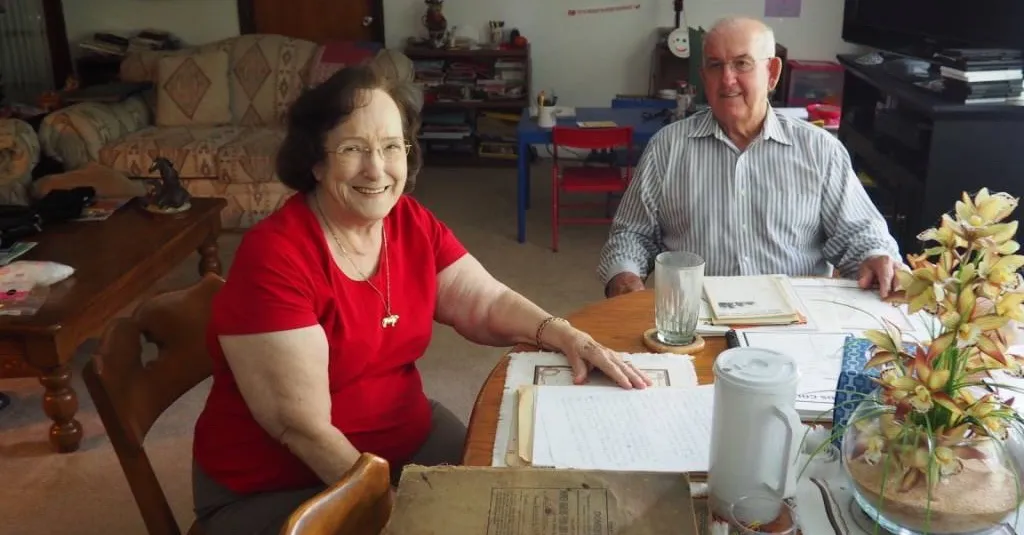
Norma explained that the house itself was the town’s oldest surviving home. The core of the ranch-style residence dates back to 1927. Since acquiring it many years back, they have expanded the building several times to accommodate their growing family.
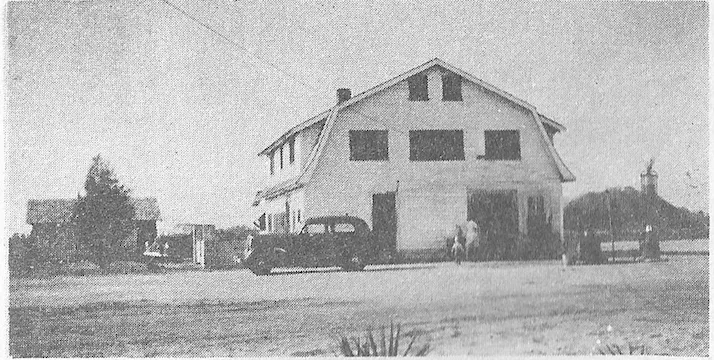
The original Stokes homestead was a two-story building just south of their home. The family lived on the top floor. The first story was the general store, meat market, and post office. Edgar’s mother, Mary, served as the town’s second postmaster (A. E. Hadley was the first) from 1930 until her retirement in 1962. Mary had a unique role in the town’s history: she gave it its name!
Originally the area was known as the Cow House settlement, with many of the first settlers homesteading south of town near Istokpoga Creek. Eventually, residents tired of that name and renamed it Sunnyland in the summer of 1925.
While “Sunnyland” did not last long as the town’s moniker, it would live on for several more decades through Sunnyland School and Sunnyland Church. Those institutions are now the historic Lorida schoolhouse and Lorida Church of the Brethren.
By 1930, the United States Census recognized the area — ringing in with a population of 99 — as the hamlet of Istokpoga. A post office was registered in 1924 under the same name.

By 1930, a train station had been established in the town as part of the Seaboard Air Line Railroad. The station bore the name “Lake Istokpoga.” To make things more confusing, a station was established on the west side of the lake called “Istokpoga,” as part of the Atlantic Coast Line!
They began to refer to them as “North Lake” and “South Lake” stations to distinguish between them. However, it didn’t help much. Mail and other goods (which were brought in by train) kept ending up in the wrong place! The station (and community) needed a new name.
At that time, Mary Stokes ran the post office out of their family’s general store on Bay Street. Previously spending time in Cuba, she fell in love with the word origin of her home state. Florida comes from the original Spanish meaning “full of flowers,” having the pronunciation “Flow-ree-dah.”
With this as her inspiration, she opined that the town should be renamed Lorida (which is Florida, minus the “F”). Her suggestion was well received. The rail station took her cue and the postal service followed suit, officially changing its name in 1937.
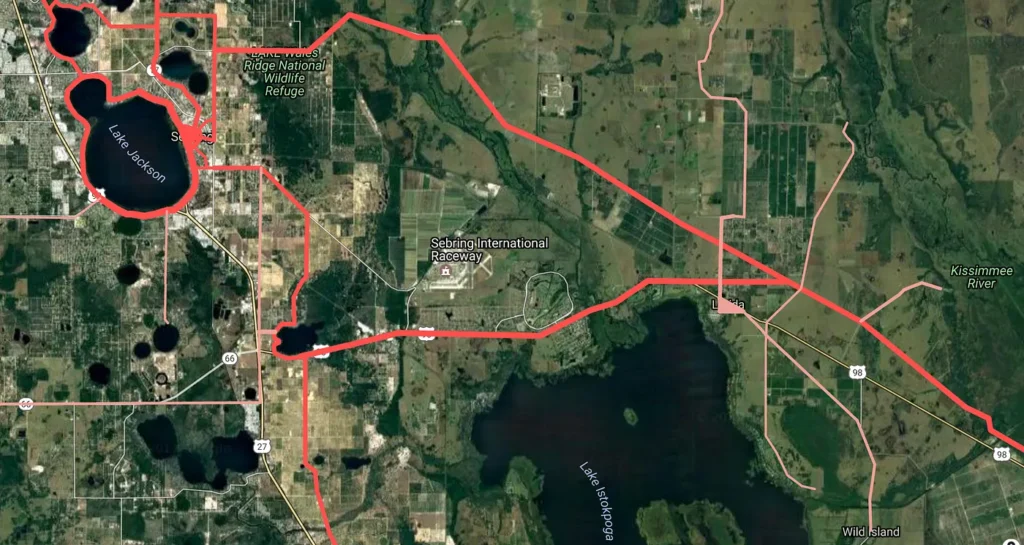
At first, the primary industry was truck farming. Various vegetables and cane could be grown in the rich soil and profitably shipped to market, especially once the trains arrived. Over time, vegetables gave way to cattle. The finest stock of Florida bovine would be loaded onto box cars for export while ranchers simultaneously imported horses.
During those days, Arbuckle Creek Road—then known as Sebring-Basinger Road—was the main thoroughfare connecting Sebring to Okeechobee. It continued east past where it stops today, running about a mile north and parallel to modern US 98 before converging with the contemporary highway’s route close to the ghost town of Cornwell.
Travel was not easy during those years, whether by wagon or automobile. Between marsh in some areas and sugar sand in others, it seemed as much time was spent pushing as it was driving!
The first dirt road through the area was graded by prison labor in 1923, but bridges were not built until the 1930s. Whether traveling west to DeSoto City, Sebring, or Avon Park or east to Basinger or Okeechobee, travelers had to cross many wetlands and several creeks.
Smaller streams, such as Carter Creek, could be forded without much problem most of the year. But ferries were required at Arbuckle Creek (run by Adolphus Keen), Istokpoga Creek (managed by the John McClelland family), and the Kissimmee River (tended by Willie Williams and Sid Pearce).
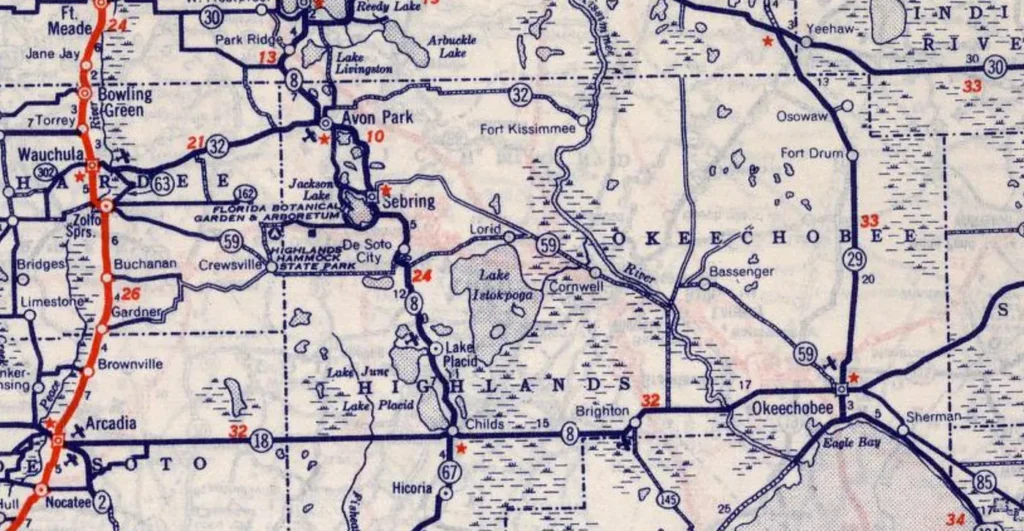
What is now Highway 98 going west from Lorida was called Highway 59. The dirt path went through thick muck land that was often impassible in the early years. It connected to State Road 8 (now Highway 17) at Red Beach Lake near DeSoto City. Several cattle trails ran north from Lorida, connecting to its pioneer sister settlement at Fort Kissimmee.
When the United States’ involvement in World War II began in 1942, the military took over northeastern Highland County. The approximately 142 residents of Fort Kissimmee were forced to relocate with barely any notice, and most of them headed down the trail to join their friends in Lorida.
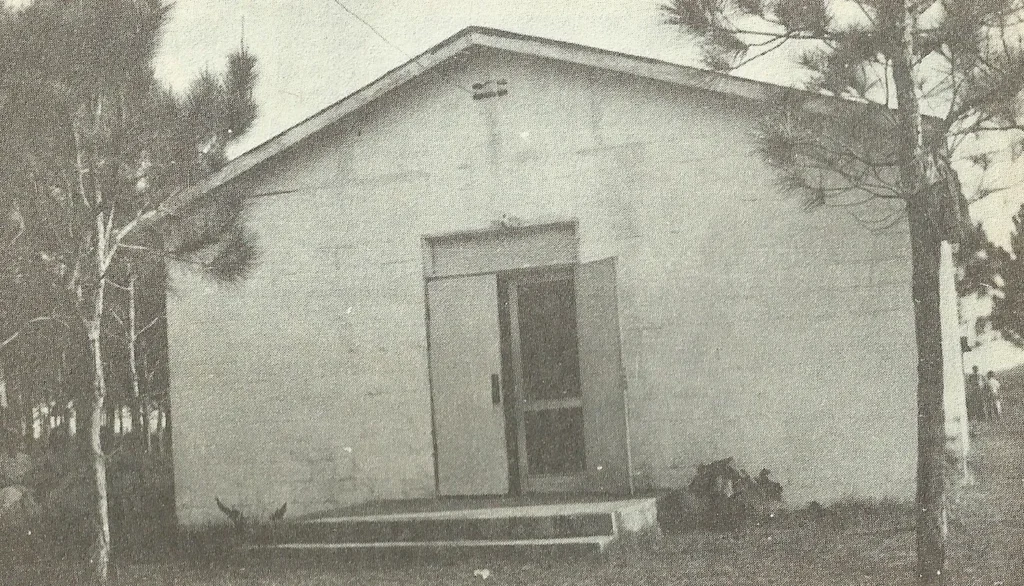
These new denizens brought their church with them. Reverend B. H. Guy founded the original Missionary Baptist Church at Fort Kissimmee, later renamed Landmark Baptist. Once the congregation relocated to Lorida, its initial services were held at Sunnyland School. By 1946, they had completed construction of their own building next door, on land donated by Flo Hadley Wiggins, and became the Lorida Baptist Church. The townspeople finally knew true luxury when indoor bathrooms were installed in 1961!
After the war, the town of Lorida boomed to approximately 350 residents. Urban sprawl wasn’t a problem, though. The various family homesteads were spread over dozens of square miles, stretching from Arbuckle Creek on the west, the Avon Park Bombing Range to the north, the Kissimmee River on the east, and Istokpoga Creek to the south.
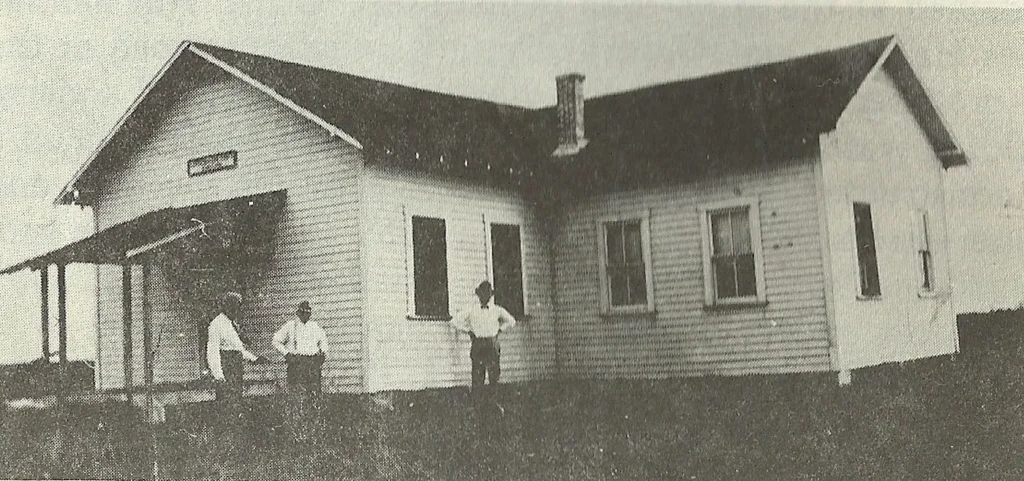
In the forties and fifties, the town supported three other churches besides the new Baptist Church: the Tabernacle Baptist south of town at Wild Island, the Holiness Tabernacle in downtown Lorida, and Sunnyland Brethren Church (pictured above) on what is now Arbuckle Creek Road.
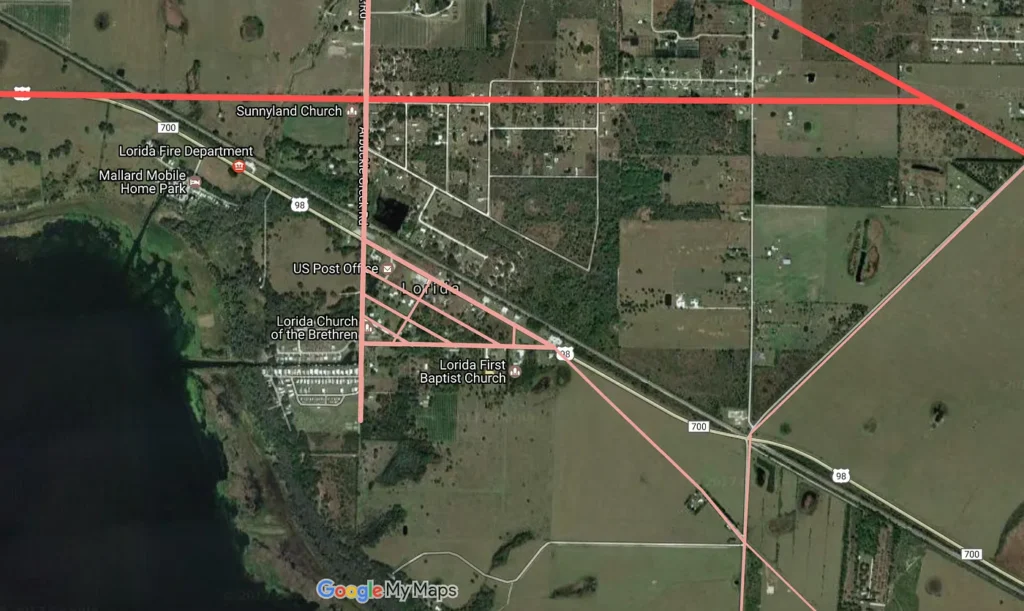
The original location of Sunnyland Church, donated by Quinn Bass, is still marked on Google Maps above, though it hasn’t existed in that location since the fifties! It was at the intersection of the former Highway 59 and Arbuckle Creek Road. The old main road ran a straight east-to-west route but is now almost imperceptible.
When US 98 was constructed in 1948, the epicenter of the town shifted to its path. The church was hoisted on wood planks resembling telephone poles and moved to its present location on land donated by Robert Stokes. It is on the map above with its new name, Lorida Church of the Brethren.
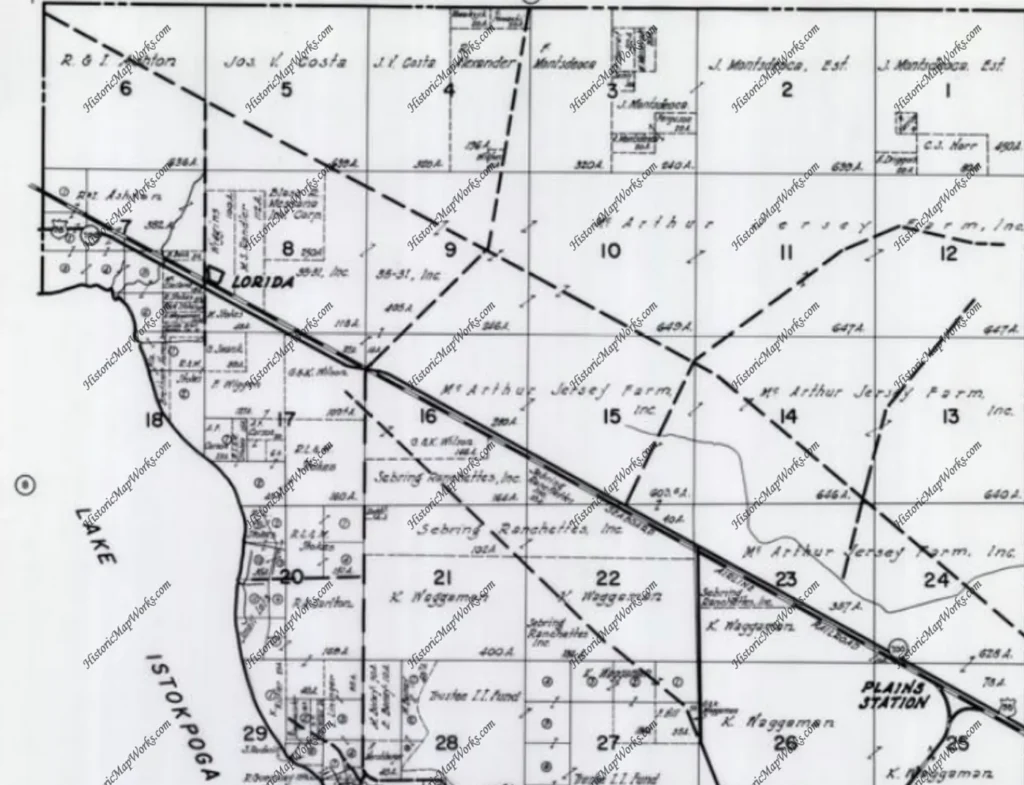
Many other buildings in town were also picked up and moved to the new main drag. The Stokes General Store was hauled north from the original family homestead on Bay Street to the intersection of 98 and Pine Terrace, where it stood until it burned down in 1975 (it was then owned by Anne Clark).
Over the years, many small family-owned general stores, gas stations, fish camps, bars, and hangouts have come and gone in the mile-long strip of the main road through Lorida between Cow House Road and Arbuckle Creek Road.
The old Lorida Schoolhouse building still stands but hosted its last class of students in 1955. By then, roads had improved enough for the county to begin bussing kids to schools in the “big city” of Sebring. What was once a three-day round trip to stock up on groceries at the Whitehouse store on the Sebring Circle had been reduced to less than an hour each way.
Despite the massive development of Spring Lake and the Sebring Raceway to its immediate west and persistent (and comical) rumors reverberating around Highlands County that construction of the “Six Flags Over Lorida” amusement park was imminent, no large-scale development has ever happened in Lorida.
Yes, modern amenities and the faster-paced lifestyle have long since reached the town. However, it has remained small and tight-knit, with cattle ranches still dominating the landscape and local economy. Many families from those early days still reside in the area.
Maintaining a family-owned agribusiness is difficult in the age of large conglomerates and globalization. Those that remain half-joke that they are “land rich and money poor.” However, the determination and toughness instilled by their ancestors still persist in today’s cracker families. Thankfully, places like Lorida still exist where these cowboys preserve the old pioneer spirit.

This post is 3152 days old. Comments disabled on archived posts.